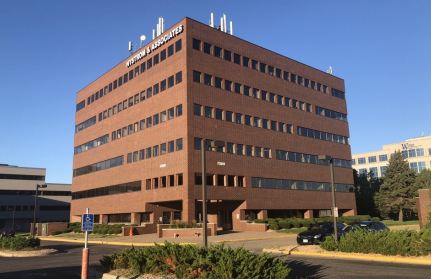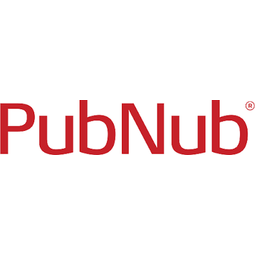Technology Category
- Analytics & Modeling - Real Time Analytics
- Platform as a Service (PaaS) - Application Development Platforms
Applicable Industries
- Cement
- E-Commerce
Use Cases
- Real-Time Location System (RTLS)
- Track & Trace of Assets
Services
- System Integration
About The Customer
Stage TEN is an interactive live e-commerce platform that enables video content creators to monetize their content and engage with their audience in real time. The platform has been used by artists and brands like Cardi B, Justin Bieber, MTV, and YouTube Originals to produce virtual events from around the world. Stage TEN's platform breaks down the barriers between a creator and their audience, offering features like chat, voting, donations, and live shoutouts for every product purchased. The platform's main goal is to create an engaging e-commerce experience at scale, allowing creators to host events where they can interact with viewers at an elevated level.
The Challenge
Stage TEN, an interactive live e-commerce platform, was facing significant challenges with their in-house chat system while hosting large-scale events. The system was unable to handle a large number of chat users simultaneously, leading to latency issues and restrictions on concurrency. This was a major concern for Stage TEN, as their platform is designed to host live e-commerce events where real-time interaction is crucial for engaging with the audience and driving purchases. The company needed a scalable chat solution that could handle any number of users without latency issues. They also wanted to enhance their platform with engaging features like emojis and real-time chat moderation to ensure a positive user experience.
The Solution
Stage TEN found the solution to their challenges in PubNub, a scalable chat infrastructure. The company was able to easily integrate PubNub into their product with guidance from the Solution Architects team at PubNub. This new system eliminated the issues of concurrency limits and latency, allowing Stage TEN to host live e-commerce events without any hitches. PubNub also provided an API that enabled Stage TEN to build more features into their platform. With PubNub, Stage TEN was able to power chat with interactive features such as emojis, alongside a live video stream. This allowed creators to interact directly with their audience, building meaningful connections and improving engagement. Stage TEN also implemented chat moderation features using the PubNub Chat Moderation Dashboard, enabling them to ban bad actors and filter chat in real time during events, ensuring a safe and enjoyable experience for users.
Operational Impact

Case Study missing?
Start adding your own!
Register with your work email and create a new case study profile for your business.
Related Case Studies.

Case Study
System 800xA at Indian Cement Plants
Chettinad Cement recognized that further efficiencies could be achieved in its cement manufacturing process. It looked to investing in comprehensive operational and control technologies to manage and derive productivity and energy efficiency gains from the assets on Line 2, their second plant in India.

Case Study
Digital Transformation of Atlanta Grout & Tile: An IoT Case Study
Atlanta Grout & Tile, a Tile, Stone & Grout restoration company based in Woodstock, Georgia, was facing challenges with its traditional business model. Despite steady growth over the years, the company was falling behind the web revolution and missing out on the opportunity to tap into a new consumer base. They were using independent software from different vendors for each of their department information and workforce management. This resulted in a lot of manual work on excel and the need to export/import data between different systems. This not only increased overhead costs but also slowed down their response to clients. The company also had to prepare numerous reports manually and lacked access to customer trends for effective business decision-making.

Case Study
Revolutionizing Construction Equipment Rental: A Case Study on ProsRent and ENO8
ProsRent, a startup that won the 'Best Financial Opportunity' and 'Best Pitch' at CodeLaunch 2016, aimed to revolutionize the way construction professionals source and rent heavy equipment. In the construction industry, project managers and contractors typically rent heavy equipment from supply companies. However, predicting inventory can be challenging, and finding the required equipment at the right time and place can be a hassle. If the preferred vendor doesn't have the required equipment, it results in wasted time and money in searching for it, often leading to higher costs due to non-preferred rates and increased delivery costs if the vendor is located far from the job site. Suppliers, on the other hand, desired access to a wider base of trusted renters that they didn't have to vet themselves and wanted to offer dynamic rental pricing based on demand and availability in their market. ProsRent's challenge was to produce a minimum viable product that was fast and first to market but also strong enough to engender loyalty and repeat business from the target market.

Case Study
IoT Solution Enhances Comfort and Energy Efficiency at Apple Valley Commons Office
Apple Valley Commons, a mixed-use office complex built in 1986, was facing significant comfort and energy efficiency challenges. The building, which houses a variety of businesses, was experiencing extreme temperature imbalances, causing discomfort to employees and clients. Despite outdoor temperatures being consistently high during summers, occupants had to use space heaters to keep warm. The electricity bills from the constant operation of the heat pump were exorbitant. The building's elevator room on the roof was also overheating, reaching temperatures of 130 to 140 degrees, causing the elevator equipment to shut down. The building's existing controls solution did not provide a front end for diagnostics or remote control. The building management was seeking a solution that could address these temperature issues, improve occupant comfort, reduce operational costs, and increase building visibility.

Case Study
Revamping EE's Legacy ERP: A Case Study on BT's Strategic Transformation
EE, even after its merger with BT, was operating its ERP estate on legacy infrastructure, hosted on the premises of a third-party supplier. This outdated system resulted in a volume-based operational model, higher time to market, longer delivery cycles, and unsatisfactory customer experience. BT recognized the need for a strategic transformation of these aging ERP systems and sought a partner who could proactively manage application services. The partner was also expected to handle development requirements associated with application management services, drive accountability, and ownership with a time and target-driven transformation of these services. BT's primary goals were to improve customer experience, reduce cycle time, and measure these improvements with precision.




